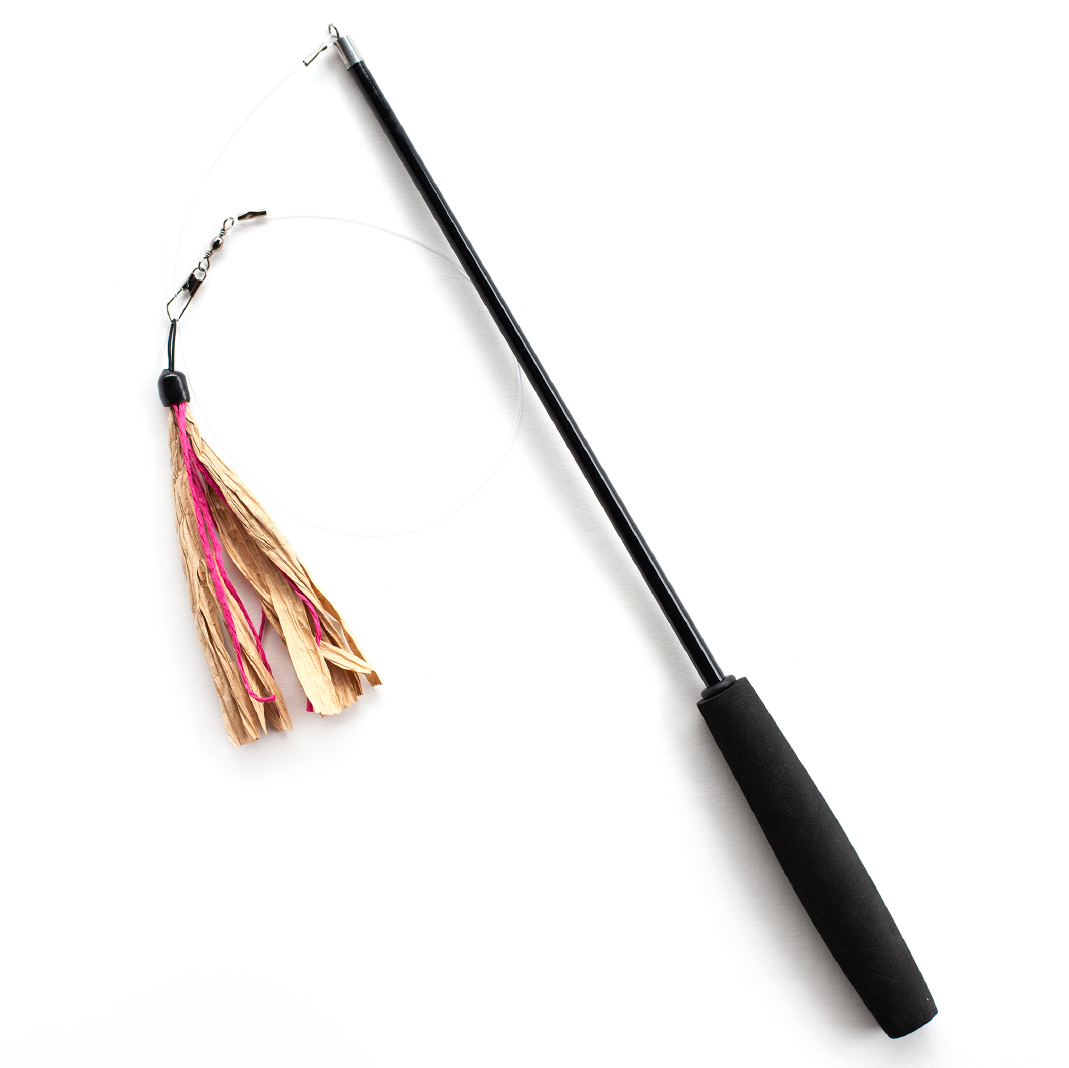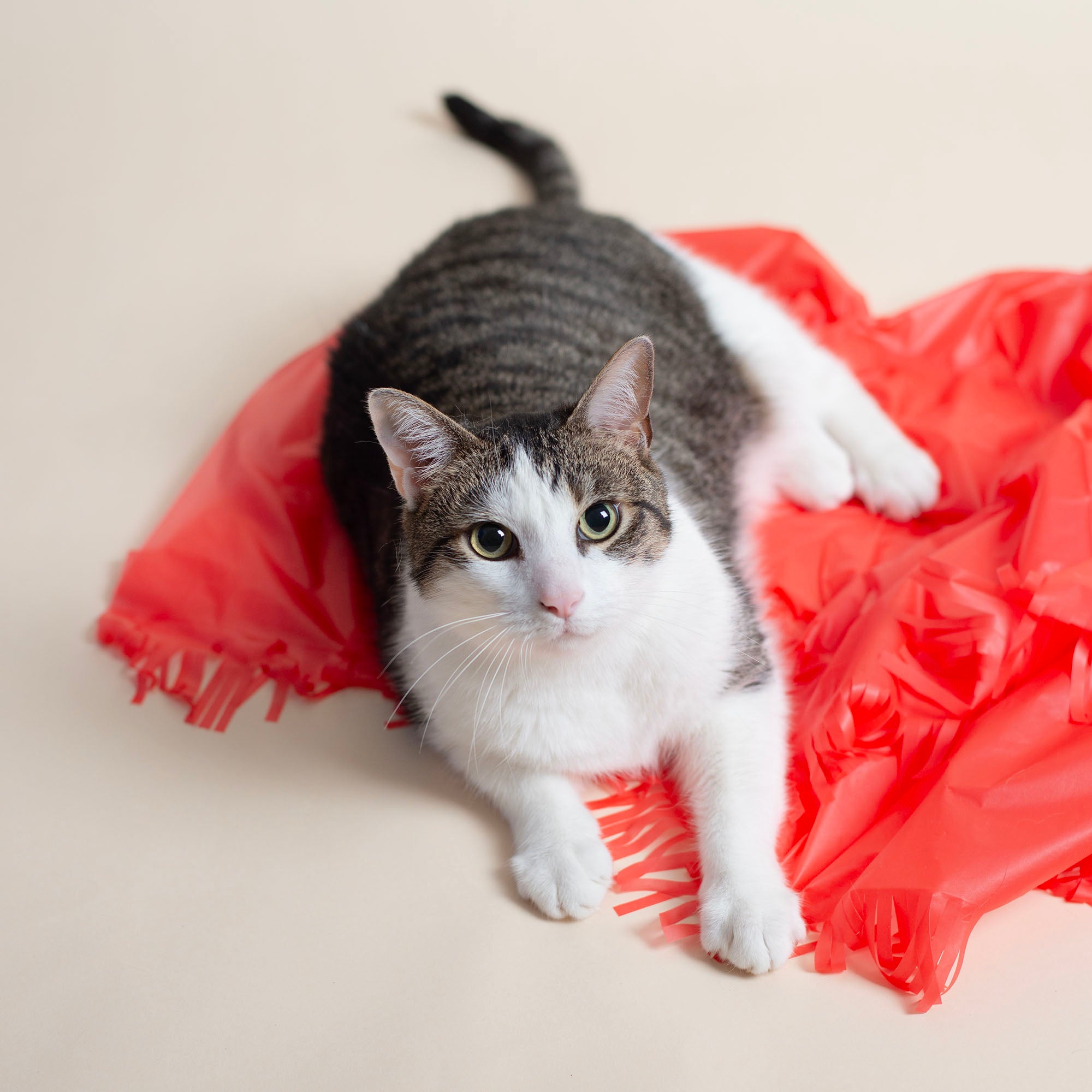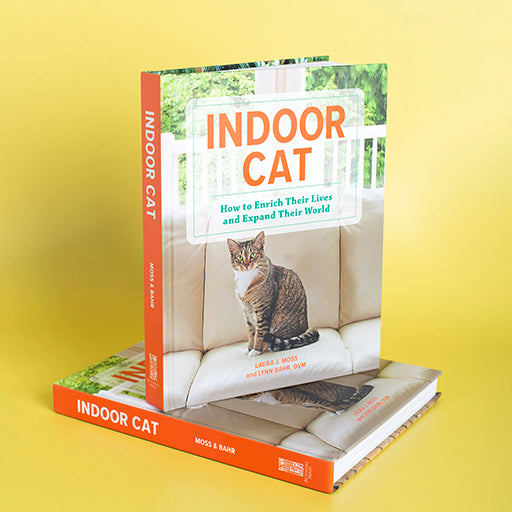New Ways to Eliminate Kitty Boredom

Many indoor cats suffer terribly from a life of bountiful food, luxurious shelter, warmth, safety, love, and security because their daily lives are dull, boring and devoid of stimulating activity. Our indoor cats have little to do all day and may feel a lack of purpose.
Does this sound like your cat? Is your cat insanely bored? If your furry friend is an “indoor only” cat there is a high probability that without constant enrichment, excessive boredom will easily become routine. It often goes unnoticed, is seldom recognized, and can be extremely dangerous. While most cat owners excel at providing their cats with all of the important essentials in life like food, comfort, safety, and love, many fall short when it comes to keeping their babies active, engaged and entertained. This is a common problem we all have and a serious issue many cats face.
In my practice as a feline veterinarian, I treat bored cats day in and day out, in what I consider to be epidemic proportions. When I started in veterinary medicine, most of my cat patients were either strictly outdoor cats or cats who wandered in and out. Twenty-five years ago it was not common as common as today for owners to keep their beloved companions exclusively indoors. Since then the state of affairs for cats has changed dramatically. Veterinarians have done a wonderful job of educating owners on the safety of keeping their cats inside and most owners are doing so. However, we have failed to take it one step forward in teaching them about the importance of preventing boredom in creatures that are smart, athletic and inquisitive who live life within four walls.
Boredom is preventable and lack of an enriched environment is treatable and it is this urgent problem afflicting so many cats that drives me, and Dezi & Roo, to help owners remedy the situation easily.
What exactly is boredom and what does it look like?
While there are many different definitions or interpretations of what exactly boredom is, in general, it relates to a specific mental state that is found to be unpleasant and due to lack of stimulation. Boredom is associated with a myriad of social, behavioral and medical problems and can seriously damage health. Signs of excessive boredom are not always easy to recognize. They are subtle and frequently go unnoticed. Signs of boredom do not appear suddenly and typically develop slowly, over time. It can lead to depression something we don’t pay much attention to in cats. Over time, boredom becomes routine and can appear normal. That is why it is so difficult to detect and requires a keen eye and owners who are in tune with their cat’s state of mind to recognize when boredom is causing problems. A few signs include:
- Depression
- Obesity
- Lethargy
- Attention seeking
- Excessive grooming or lack of grooming
- Eating disorders
- Aggression
- Disinterested in play
- Excessive sleeping

We all know what it is like to be bored and sometimes it is a good thing. While there are certainly benefits to having nothing at all to do, like daydreaming, relaxing and using our imagination, excessive boredom, on the other hand, can be excruciating. It can even be life-threatening.
Why do cats get bored? They have everything they need, don’t they?
Indoor cats become bored easily because their entire life exists within four walls. Day in and day out their environment, food, social interactions, and routine stay basically the same. Curious by nature cats have limited opportunities for exploration that keep them interested in their environment. They are athletic creatures who enjoy hunting, climbing, chasing, running and playing a lot and are able to do so many times a day outdoors. Living indoors, however, limits their ability to engage in these pleasurable activities on a frequent enough basis to keep them from becoming lazy and bored. Cats are very smart and need to be engaged, stimulated and challenged in order to keep their minds sharp. Without adequate mental stimulation, their brains turn to mush.
Here is a cute video showing how cats have fun playing in the Hide and Sneak. It is interesting to watch how they use their bodies, minds, and personality to turn a simple toy into something interesting and fun. While these cats don’t have the natural opportunity to hunt, catch or kill live prey, they can still pretend and have fun.
What’s the problem?
Cat owners are busy people who work hard all day. They have lots to do to keep their cats well fed and their litter boxes clean. After a long day away from home and their cats, owners enjoy interacting with their furry friends by petting, stroking and sitting with them. Actively playing with their cats typically takes a back seat to all of the other chores they have to perform. Compounding the problem is the limited resources owners have in finding fun and engaging toys for their feline friends. The variety of cat toys available pales in comparison to how many toys are offered for dogs. Lack of practical ideas or easy solutions is other reason owners have difficulty finding ways to engage their indoor kitties. And the bottom line is that it takes planning, effort, creativity and work to keep our beloved companions stimulated and some owners don’t always have the energy or time to engage actively with their cats. However, daily play and activity is something all indoor cats need and it important to their health and well-being.
Our Solutions
The first step to fixing or preventing a problem is to acknowledge it. Recognizing that indoor cats are at higher risk of suffering from boredom than their outdoor counterparts and understanding the severe consequences it has on their well-being allows us to find solutions that prevent or remedy the situation.





These simple suggestions are just a few of the many ways in which to keep your cat from becoming hopelessly bored. We hope it inspires you to take a closer look at finding ways to ensure that your cat is living an active lifestyle filled with joy, fun, and excitement. You can help other cat owners by sharing your best tips and techniques for keeping life interesting for your cat with us. Let us know what special things work for you by leaving your comment below.
Share:
6 comments
-
Look forward to help my bored cat
Catherine Fitzpatrick on
-
My cat is exactly that, as an indoor cat I try to keep him stimulated but it isn’t easy as a I also work full time and wasn’t able to get him a variety of toys, I will try to include these however if anyone has any other ideas on how to keep your cat stimulated indoors, that would be lovely!
Maitha on
-
My 1 1/2 year old cat seems bored constantly. Me and my son play with her several times a day. When it’s nice out there are several windows where she can watch the world and the birds and smell everything. We even started taking her outside on the deck on a leash and stay with her out there for half hour or more. She watches the birds and sniffs all over the place. She has lots of toys that we rotate but she really only plays with springs and wand toys where we play with her. Sometime she’ll play fetch. But she still spends a lot of time just walking around meowing. Vet says she’s physically fine. It’s just exhausting trying to keep her stimulated. It seems like it’s never enough and she just wants to be outside. :(
Teresa on
-
I’d really love to see articles like this with more advanced ideas, or more ideas for non-food focused cats.
We have a round see-through garbage pail and we put toys in it for our cat to get out. He’s discovered a few ways.
He’s very smart and gets bored easily and we’ve exhausted everything on the average internet search list. It’s all the same: puzzle feeders, play with them, places to watch outside, leash training….Barbara Kehoe on
-
I let mine hunt my ferret. The ferret is very gentle with the cats, but if a cat gets too rough, she knows how to handle herself to keep herself safe. The activity is fun for both and it stimulates their brains.
Trisha on
-
I so appreciate these posts! Even though i’m a lifelong cat companion, a vet assistant, and owner of a pet-sitting business, i need these reminders of how to enrich my own indoor cat buddy’s life. She’s indoors-only at my landlord’s demand, and used to be outdoors a great deal of the time. I find this so hard to deal with, for her sake!
Holly Holmes on










